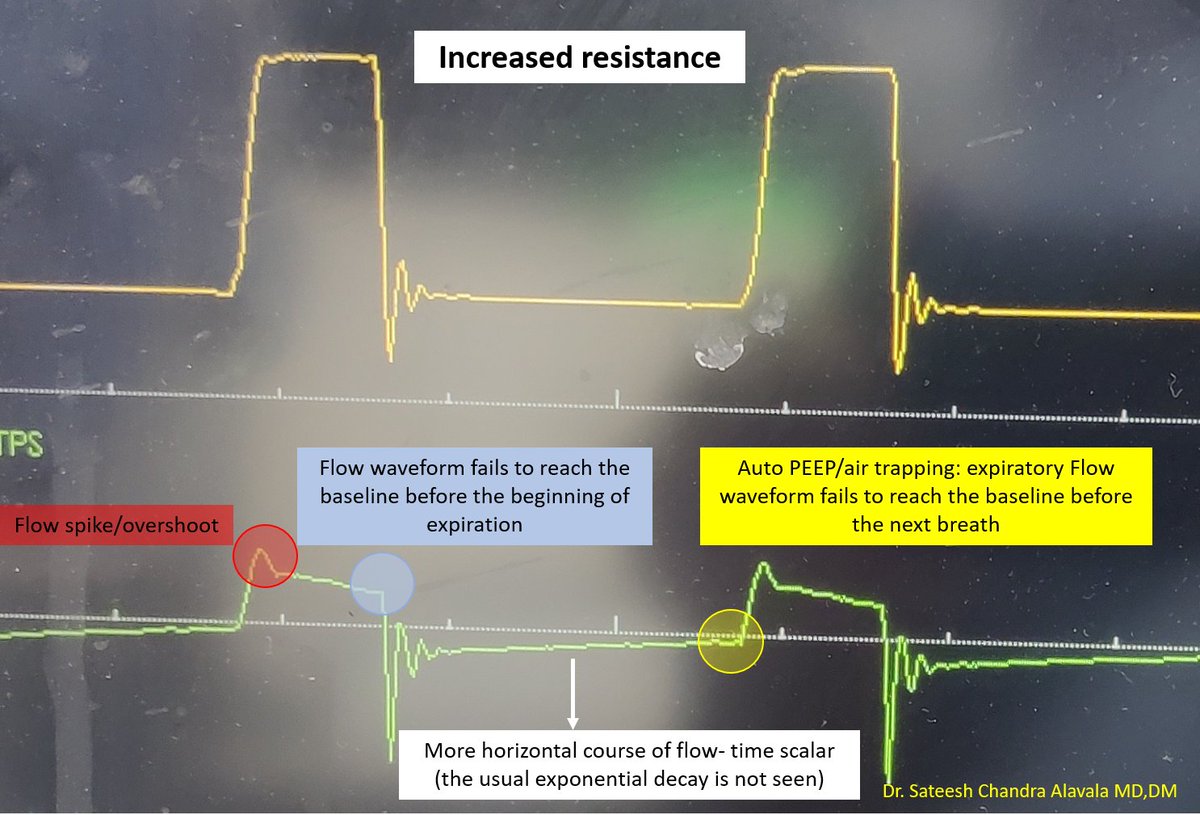Correct Answer: Increase...

Highlights
- Correct answer: Increased resistance
Patient had CKD, Pulmonary edema, sepsis, and thrombocytopenia. This waveform was noticed on the third day of the hospital stay. Chest auscultation revealed crackles. ET tube block was suspected as the waveforms showed increased resistance.



 (View Tweet)
(View Tweet)
- The following findings can be noticed if the airway resistance increases (both during inspiration and expiration)
- Flow spike at the beginning of inspiration
- Decreased peak inspiratory flow
- Decreased slope/ more horizontal course of inspiratory flow-time scalar

 (View Tweet)
(View Tweet)
-
- Inspiratory flow-time scalar may fail to reach the baseline at the end of inspiration (indicates long time constant)
- Flow oscillations because of the pressure release function of the ventilator during early expiration while managing increased airway resistance (View Tweet)
-
- Loss of exponential decay of expiratory flow-time scalar
- Auto-PEEP/air-trapping: Expiratory flow-time scalar fails to reach the baseline before the next breath. (View Tweet)
- Increased airway resistance can occur if there is an ET tube block/kink, or severe bronchospasm. In this case, the ETT was changed as there was resistance while passing the suction catheter. After changing the ET tube you can notice the nice exponential decay of the F-T scalar.

 (View Tweet)
(View Tweet)




 (View Tweet)
(View Tweet)
 (View Tweet)
(View Tweet)
 (View Tweet)
(View Tweet)